Click to view our Accessibility Statement or contact us with accessibility-related questions













Amps and DACs?

search
close
Sort by: Newest
keyboard_arrow_downsteelclaw1313
1
Nov 19, 2017
So all that being said, does anyone have any recs on good entry level tables/amps/speakers/headphones? I'm not necessarily on a super tight budget, but not looking to spend thousands, ya feel?
Thank you all, again, for your help.
Thank you all, again, for your help.
steelclaw1313
1
Nov 15, 2017
I guess my next question would be..
Is a DAC and Amp combo like some other tech combos where it's not as good if they're in one unit? So, is it better to get them separately or is a combo usually sufficient? Well.. I guess "sufficient" is a bit subjective.. but y'all get it.
Is a DAC and Amp combo like some other tech combos where it's not as good if they're in one unit? So, is it better to get them separately or is a combo usually sufficient? Well.. I guess "sufficient" is a bit subjective.. but y'all get it.

shimage
228
Nov 15, 2017
steelclaw1313"Sufficient" is entirely dependent on your budget. This stuff isn't difficult to design or manufacture. All-in-one is going to be fine. Separate is also fine. They are all going to measure the same, for the most part, and in a blind test they will also sound the same. Sighted, there is a good chance you will hear differences. Sighted listening is, I guess, more important than blind in the sense that that is how you will be listening to music. But I won't give you advice based on what your brain may or may not make up out of thin air. Lots of people like to do this, but for me it seems disingenuous. My advice is to always demo before buying, or to buy from a place that allows returns (eg, schiit). That way your satisfaction is in your hands alone.
As for specifications (I didn't see anyone go through this below), the ones usually given are frequency response, THD+N, crosstalk and for amps probably power output as well. Less often you will see output impedance and IMD measurements.
Frequency response should be flat. If it isn't then something is wrong and you should probably avoid it (dac or amp). That's all there is to say about that.
For distortion, it is surprisingly difficult to hear distortion of any kind <1% in anything other than optimal conditions. Total system distortion <0.1% is attainable, though, and not particularly difficult to do.
THD is harmonic distortion. Basically, when fed a sine wave, any periodic deviation from that in the output (meaning it happens the same in each wave) is going to be captured by THD. Clipping and crossover distortion are examples of harmonic distortion. For THD, DACs don't have as much to do, so usually you expect the distortion to be lower (say, <0.01%). Ideally, they will give THD as a function of frequency (with stated output levels), but this is fairly uncommon. One manufacturer that does is Topping, and you can see from their graph of the D30 that THD tops out at around 0.0008% (THD for signals >10kHz are irrelevant). For amps, I would say <0.1% is probably fine, but I expect <0.01% under load (that is, driving 30Ohm or so headphones) over the entire spectrum. This is not difficult to find, and in fact most decent cellphones manage this easily.
Intermodulated distortion is distortion caused by the presence of multiple frequencies at the same time (a fairly common situation in music, obviously). IMD is usually higher, but it often isn't reported, or if it is, they don't report it properly (what is the load, what are the two frequencies used, what are the levels for each?). Ideally, you would have measurements for a variety of pairs of frequencies, but this is never done except by individuals curious about their gear. As with THD, this should be <0.01%. A lot of cellphones have problems with this, but some do fine (Samsung, LG, Apple). Pretty much any desktop amp should be able to manage this, but some little ones, like iFi's products, have issues somehow. The popularity of the dragonfly suggests that it isn't terribly audible, but still... value for money and all that.
Power output doesn't really matter, so long as it gets loud enough. A gain switch is nice to have, if you have a variety of headphones with different impedances and efficiencies. Keep in mind that even very inefficient headphones need at most several milliwatts to get to ear-bustingly loud volumes. If your source doesn't put out linelevel, then you'll need a bit more gain. However, the importance of power output is usually overstated. The other thing to worry about is that if you listen at very low volumes, or have too much gain, you may end up all the way on the quiet end of the volume pot. The problem with this is that that is where pots have noticeable channel imbalances. You can always stick an in-line attenuator somewhere so this isn't that big a problem, honestly.
Output impedance is a bit of a wash. Standard practice is that output impedance should be a factor of 8-10 less than the impedance of the load (ie, the headphone). If it is not, weird things can happen (usually, a boost to the bass/lower mids). For example, this resistance can mess with crossover circuits found in multi-BA IEMs. Dynamic headphones pretty much always have a resonance in the bass with a commensurate increase in the impedance; this is what causes the bass boost with OTL tube amps. Some people like the weird things that happen. Some headphones are designed with sizable output impedances in mind (eg, both Sennheiser's and Beyerdynamic's headphone amps have ~100Ohm output impedance). So ... buy whatever you want. It bears mentioning, though, that planars are resistive loads and aren't affected by non-zero output impedance aside from a drop in overall volume level.
Crosstalk doesn't matter. Even the worst amps have crosstalk ~-50dB, which is inaudible and isn't going to affect soundstage or imaging in a real way. Could have effects in sighted listening, but whatever. No one complains about crosstalk in loudspeaker systems.
Jitter. This used to be a problem for poorly designed dacs, but it isn't anymore. Don't worry about it. Even the lowly Fiio E10 (long ago superseded by the E10k) has good enough jitter rejection.
I almost forgot! phase response! Nobody cares. Look at the phase response of the HD800 and tell me that it matters. The O2 is only off by 8deg, and even then only in low frequencies where it doesn't matter. Airist really wants you to care, but you shouldn't.
As for specifications (I didn't see anyone go through this below), the ones usually given are frequency response, THD+N, crosstalk and for amps probably power output as well. Less often you will see output impedance and IMD measurements.
Frequency response should be flat. If it isn't then something is wrong and you should probably avoid it (dac or amp). That's all there is to say about that.
For distortion, it is surprisingly difficult to hear distortion of any kind <1% in anything other than optimal conditions. Total system distortion <0.1% is attainable, though, and not particularly difficult to do.
THD is harmonic distortion. Basically, when fed a sine wave, any periodic deviation from that in the output (meaning it happens the same in each wave) is going to be captured by THD. Clipping and crossover distortion are examples of harmonic distortion. For THD, DACs don't have as much to do, so usually you expect the distortion to be lower (say, <0.01%). Ideally, they will give THD as a function of frequency (with stated output levels), but this is fairly uncommon. One manufacturer that does is Topping, and you can see from their graph of the D30 that THD tops out at around 0.0008% (THD for signals >10kHz are irrelevant). For amps, I would say <0.1% is probably fine, but I expect <0.01% under load (that is, driving 30Ohm or so headphones) over the entire spectrum. This is not difficult to find, and in fact most decent cellphones manage this easily.
Intermodulated distortion is distortion caused by the presence of multiple frequencies at the same time (a fairly common situation in music, obviously). IMD is usually higher, but it often isn't reported, or if it is, they don't report it properly (what is the load, what are the two frequencies used, what are the levels for each?). Ideally, you would have measurements for a variety of pairs of frequencies, but this is never done except by individuals curious about their gear. As with THD, this should be <0.01%. A lot of cellphones have problems with this, but some do fine (Samsung, LG, Apple). Pretty much any desktop amp should be able to manage this, but some little ones, like iFi's products, have issues somehow. The popularity of the dragonfly suggests that it isn't terribly audible, but still... value for money and all that.
Power output doesn't really matter, so long as it gets loud enough. A gain switch is nice to have, if you have a variety of headphones with different impedances and efficiencies. Keep in mind that even very inefficient headphones need at most several milliwatts to get to ear-bustingly loud volumes. If your source doesn't put out linelevel, then you'll need a bit more gain. However, the importance of power output is usually overstated. The other thing to worry about is that if you listen at very low volumes, or have too much gain, you may end up all the way on the quiet end of the volume pot. The problem with this is that that is where pots have noticeable channel imbalances. You can always stick an in-line attenuator somewhere so this isn't that big a problem, honestly.
Output impedance is a bit of a wash. Standard practice is that output impedance should be a factor of 8-10 less than the impedance of the load (ie, the headphone). If it is not, weird things can happen (usually, a boost to the bass/lower mids). For example, this resistance can mess with crossover circuits found in multi-BA IEMs. Dynamic headphones pretty much always have a resonance in the bass with a commensurate increase in the impedance; this is what causes the bass boost with OTL tube amps. Some people like the weird things that happen. Some headphones are designed with sizable output impedances in mind (eg, both Sennheiser's and Beyerdynamic's headphone amps have ~100Ohm output impedance). So ... buy whatever you want. It bears mentioning, though, that planars are resistive loads and aren't affected by non-zero output impedance aside from a drop in overall volume level.
Crosstalk doesn't matter. Even the worst amps have crosstalk ~-50dB, which is inaudible and isn't going to affect soundstage or imaging in a real way. Could have effects in sighted listening, but whatever. No one complains about crosstalk in loudspeaker systems.
Jitter. This used to be a problem for poorly designed dacs, but it isn't anymore. Don't worry about it. Even the lowly Fiio E10 (long ago superseded by the E10k) has good enough jitter rejection.
I almost forgot! phase response! Nobody cares. Look at the phase response of the HD800 and tell me that it matters. The O2 is only off by 8deg, and even then only in low frequencies where it doesn't matter. Airist really wants you to care, but you shouldn't.
ohsigmachi
232
Nov 11, 2017
I'm no expert, but basically, all of your consumer electronics "CE" (computer, phone, iPod, etc.) have some kind of amp/dac built into them. But they are often compromised in architecture or quality due to either size or cost restraints.
Moving these components outside of the form factor of your CE gear allows you to overcome many of those compromises.
DAC: digital to analog converter. The electrical signal that speaker diaphragms react to is analog (think manipulation of a wave's form and frequency on spectrum analyzer). Digital Music doesn't start life in this form, it's encoded into binary information packets (1s and 0s). The DAC takes the binary, and as faithfully as possible, translates that to an analog signal.
AMPs: The Amp takes that(often very weak) analog signal from that DAC and amplifies it to have enough energy to actually move the speaker's physical architecture, which in turn produces sound.
Moving these components outside of the form factor of your CE gear allows you to overcome many of those compromises.
DAC: digital to analog converter. The electrical signal that speaker diaphragms react to is analog (think manipulation of a wave's form and frequency on spectrum analyzer). Digital Music doesn't start life in this form, it's encoded into binary information packets (1s and 0s). The DAC takes the binary, and as faithfully as possible, translates that to an analog signal.
AMPs: The Amp takes that(often very weak) analog signal from that DAC and amplifies it to have enough energy to actually move the speaker's physical architecture, which in turn produces sound.
steelclaw1313
1
Nov 15, 2017
Gotcha. So, in other words, a DAC is a DAC is a DAC. It just serves one function and it doesn't vary much. Okay. Simple enough it seems. So I guess there's not much reason to spend hundreds on a DAC.

Jackula
1743
Nov 15, 2017
steelclaw1313It depends on how much presentation means to you. My personal opinion is as long as you can't tell the difference, then there's no need to upgrade to a much more expensive DAC.
I also think that everyone will eventually be able to hear the differences in presentation between DACs, it is inevitable. When you first break into the audiophile world, it's new and your ears aren't used to it. Once your ears gain some XP and level up, they will be more sensitive to variations in presentation.
I also think that everyone will eventually be able to hear the differences in presentation between DACs, it is inevitable. When you first break into the audiophile world, it's new and your ears aren't used to it. Once your ears gain some XP and level up, they will be more sensitive to variations in presentation.
PRODUCTS YOU MAY LIKE
Trending Posts in Audiophile

harrykane01
World Of Shanik
The World of Shanik, known for its fusion of culinary excellence and elegant design, now offers a diverse range of products to enhance your lifestyle. From the exquisite turntable cheese board, perfect for entertaining guests with style, to the nightstand organizer wood, keeping your essentials neatly arranged, to the custom tequila shot glasses that add a personal touch to any gathering, Shanik continues to innovate in both form and function. Since its inception as a celebration of good food, good people, and sophisticated design, Shanik has evolved into a trusted destination for those who appreciate quality craftsmanship and tasteful living.
Apr 25, 2024

robbertwilson
Shop Premium Women Golf Shirts at ApparelnBags
Be the trendsetter on the golf course with our stylish collection of custom polo shirts for women. Whether you're swinging your way to victory or simply want to rock that sporty chic look, our polo shirts for women are here to make you stand out. Moreover, we understand that style and quality go hand in hand. That's why, from golf shirts for women to long sleeve polo shirts for women , we handpick the best products to ensure you experience comfort and durability. Also, our women polo shirts offer the perfect blend of style and functionality, so you can focus on your game without compromising style. So, grab your favorite polos today. Remember, it's not just a game; it's a lifestyle, and our polos will help you ace both!
Apr 25, 2024

SsButerbal
Ringing in PC38X's
I recently got this headset, and wow is it good. My only issue is when certain people talk on discord, I can hear a really high pitched ringing. I fiddled with a bunch of settings, computer audio and discord, and nothing seems to solve the issue. It is primarily if not all in my right ear only. Is there something wrong with my headset, or was that ringing always there I can just hear it cause the headset is THAT good? I haven't had any issues with any other application, though I have yet to test if I can hear the ringing on a different version of discord, say on my xbox instead of my pc. Only other issue I've had is occasional static, but I can't tell if it's from the headset or the show/game/etc.
Apr 24, 2024
itsamepe
Sennheiser PC37X randomly goes bad after disconnecting the cable ?
Greetings, Yesterday I was using my headset like normal with my macbook, just listening to music and on a call with people like usual, and the headset was perfectly fine. The stock wire that came with the headset is extremely long and yesterday it annoyed me very much that it kept getting tangled with itself, so I decided to see if the cable is replaceable. I pulled out the cable from the headset and saw the adapter, and looked online for a replacement. Upon plugging it back in, the audio sounded extremely muffled and washed out. Im not sure what I did wrong to make it mess up like that as I've always taken good care of it, ive had it for about 2 years and its always just been chilling on my desk, but anywho I thought the cable just went bad and ordered a replacement. The replacement came, and the issue is still persistant, so I am not sure what the issue is I've tried multiple different headsets and the issue is not with the port, and I also tried it with my windows laptop and...
Apr 23, 2024

MrChiSox
Big changes coming to my tiny little music room, I've recently purchased a new stack. Currently figuring out where to locate it all and ordering up the necessary cables, it won't be too long before I'm up and running. I am now the proud owner of a brand new stack. It's a European brand called Earmen. Amp, DAC, Streamer & Linear Power Supply. It won't be long!
https://www.youtube.com/watch?v=MB15yM4UptQ
Apr 23, 2024

Briankan
Recommendation for my next headphone set? I have Koss 95x
Hey all, What would you recommend I get next and why? I have Koss ESP-95x electrostatic massdrop headphones. These are my first and only audiophile set. I love them. I think my only real requirements is $500 or less for the headphones and that they have a little more low end. I don’t need thump but these are really light on lows…but the experience is still awesome. Also any recommendations on an amp? I only have my electrostatic thingy. I am using the Topping D50 DAC. thx!!
Apr 22, 2024

Simthaniel
Rigs
Modded headphones with qudelix at the core
When I received the Qudelix 5K, I had already modified a pair of Superlux HD-681 headphones. I previously soldered my own balanced connections to the drivers, providing multiple ways to connect and...
Apr 14, 2024
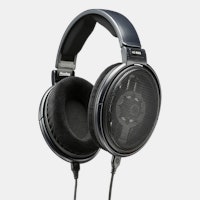
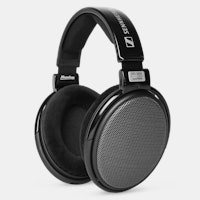

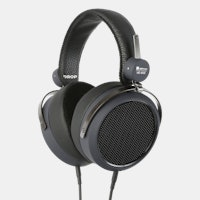
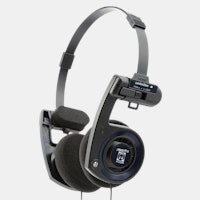
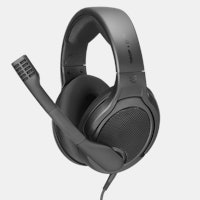
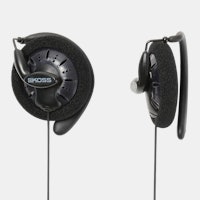
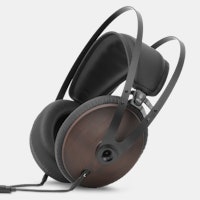
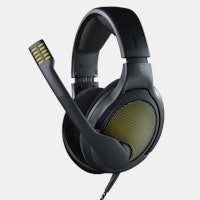
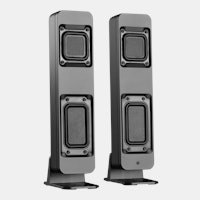
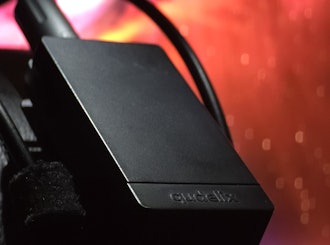
If there is anyone willing to give me a short (or long.. I guess it doesn't really matter) explanation for each and what/who they're primarily for, and also what to look for in them, I would be much appreciative!
Thank you all in advance!